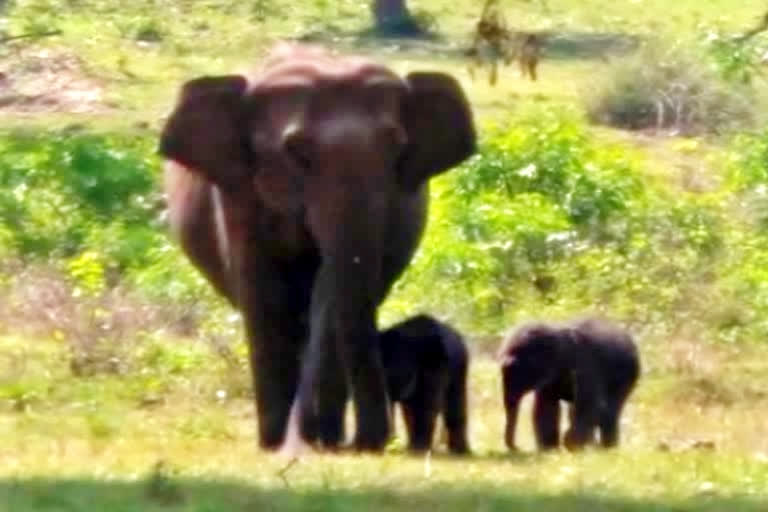New Delhi: Along with the main recommendation in connection with the CITES under proposed amendments to the Wild Life (Protection) Act, 1972, a Parliamentary panel has also recommended creation of an advisory body for addressing the human-animal conflict and suggested strict measures for the State Board for Wild Life (SBWL).
As reported by IANS on Thursday, the Department-related Parliamentary Standing Committee on Science and Technology, Environment, Forests & Climate Change, in its Report on 'The Wild Life (Protection) Amendment, Bill, 2021' had supported the government's reason for legal backing in view of the Convention on International Trade in Endangered Species of Wild Fauna and Flora (CITES).
It had recommended critical changes in the way it is done and also provided observations and recommendations on a number of issues, including human-animal conflict (HAC). Conflict between humans and animals is one of the main threats to the long-term survival of some of the world's most iconic species, a 2021 report by the World Wide Fund for Nature (WWF) and the UN Environment Programme (UNEP) had pointed out.
It had highlighted that globally, conflict-related killing affected more than 75 per cent of the world's wild cat species. Besides, many other terrestrial and marine carnivore species such as polar bears and Mediterranean monk seals as well as large herbivores such as elephants are affected. In India, as per the Environment Ministry data, more than 500 elephants were killed between 2014-2015 and 2018-2019, mostly due to human-elephant conflict.
Also read: IIT Palakkad: Experts suggest strict security measures to keep elephants at bay
Of course, more than 2,000 humans too were killed in such conflicts during the same period. Stating the reasons for why another Statutory Committee is required when the law already empowers constitution of State Board for Wild Life (SBWL), the Parliamentary Committee said, "Human-Animal Conflict (HAC) is a complex issue as serious as hunting and therefore needs legislative backing in order to effectively manage the situation."
The HAC requires to be disaggregated into those conflicts that endanger human life and property (as in the case of elephants and large carnivores) and those that damage human property - for example, crop damage, the Committee report said. It had suggested the possible composition of the Committee assigning reason.
The suggested HAC Advisory Committee will be headed by the Chief Wild Life Warden, who is the sole authority under the relevant section of the Wild Life Act to take decisions in respect of Schedule I animals (listed as per their status, endangered or not) and he/she, in turn, can consult this committee under the newly proposed section to enable the Chief Wild Life Warden in proper decision making, "particularly in contentious situations involving huge media & public outcry.
The specialised committee, having limited members with in-depth technical knowledge for evolving effective site-specific plans/ mitigation strategies including recommendations on changing cropping patterns and for taking critical decisions at short notice, empowered under the law.
Watch: Human-animal conflict: Elephant chases people in Mysore
It will have over 10 members, chaired by the Minister in-charge of Ministry of Environment, Forests and Climate Change who may not have the specialised knowledge in terms of technical issues like chemical immobilization and specialised capture techniques, translocation, identification of corridors for long-term resolution, etc.
"That in order to deal with law and order situations which erupt in most HAC situations, a senior police officer empowered under the law has been recommended so that appropriate orders, to Superintendents of Police to effectively control law and order and ensure protection to forest staff and property, can be issued, the Parliamentary panel, headed by former Environment Minister Jairam Ramesh, recommended.
Another specific amendment is the one relating to the creation of a Standing Committee of the State Board for Wild Life (SBWL). It pointed out that such a Standing Committee with no more than 12 members will be packed with official members, exercise all powers of the SBWL and take decisions independent of the SBWL itself.
Also read: Lion safaris in Gir should be minimal; reduce human-animal interaction: Gujarat HC
"It will end up being a rubber stamp for faster clearances of projects," the Parliamentary panel recommended that if at all a Standing Committee of the SBWL is to be formed, then it must mandatorily have at least one-third of the non-official members of the SBWL; at least three institutional members (such as ICFRE, NTCA, etc.); and the director or the nominee of the Wildlife Institute of India.
"The same composition should be applicable to the National Board for Wild Life (NBWL) as well," the panel suggested.
IANS



